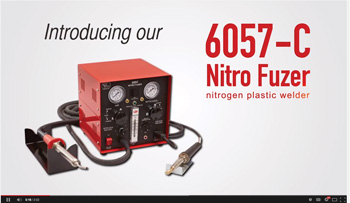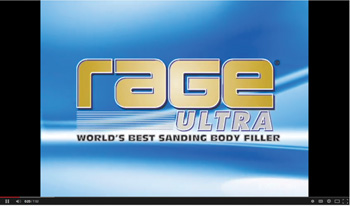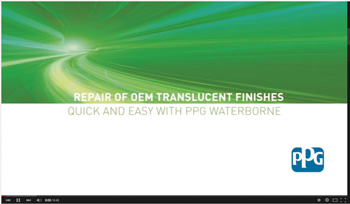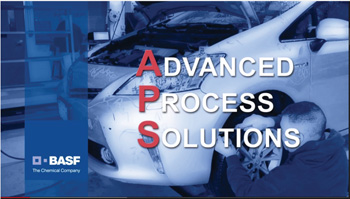 Consumers are increasingly leaning toward watching videos online, as the rapid growth in mobile devices continues. But how does that translate to the collision repair industry? It’s one thing for people to become obsessed with cat videos, but in the business world, are collision repair professionals increasingly turning to videos for training purposes and connecting with the companies that make the products that make their jobs easier?
Consumers are increasingly leaning toward watching videos online, as the rapid growth in mobile devices continues. But how does that translate to the collision repair industry? It’s one thing for people to become obsessed with cat videos, but in the business world, are collision repair professionals increasingly turning to videos for training purposes and connecting with the companies that make the products that make their jobs easier?
It seems that manufacturers think so. Most have a presence on YouTube, with some being more involved than others. The videos run the gamut: some promote the merits of their company, while others highlight their new products or offer training. Some are even pure entertainment.
 Urethane Supply
Urethane Supply
For Kurt Lammon, YouTube literally saved one of his products. He was about to pull PlastiFix, a two-part methacrylate adhesive system for repairing plastics, because he wasn’t selling very much of the product through his traditional collision repair channels. And then the YouTube video hit.
“A lot of people who own street motorcycles with expensive plastic fairings saw it and said, ‘Hey, wow, this is a great product!’ and sales started to jump,” says Lammon. “And that’s our most watched video on our YouTube channel to date.” It has more than 390,000 views, to be exact.
Lammon saw the merits of using YouTube to reach his customers as far back as 2009, understanding that it was the perfect medium to show potential customers how his products work.
“A lot of our products require a visual presentation,” he says. “There is a certain technique you use to weld or apply Plastifix adhesive. It would take me five minutes to describe it on the phone, and you probably wouldn’t get it. But if you saw it on YouTube, instantly in 30 seconds you would get it. It’s a great way to do a technical explanation of how to use our products.”
Lammon also uses YouTube to train his distributors and jobbers and for convenience and cost savings.
“It’s a really good way to go versus flying trainers and myself all around to do it face to face. It’s a much lower cost on YouTube. It doesn’t replace face to face but augments it and allows people to get up to speed to make your face-to-face time more productive.”
As far as producing the videos goes, Lammon and another employee do it all, from creating the content to editing and posting it. Since some of the editing can take up to eight hours, he will sometimes farm it out to a local person. Like many business owners, Lammon finds his time crunched, and sometimes the videos are not his No. 1 priority. But in the end, he feels they’re important enough to do when he can.
The Urethane Supply YouTube channel currently has 2,300 subscribers, and Lammon is always shooting for more. Every time he comes out with a new video (every two to three months), he sends out an email blast to let everyone know and encourage them to subscribe to the channel to receive regular updates.
Sample video
The Benefits of a Nitrogen Welder
Keep more labor dollars in the shop by repairing many of the plastic bumpers and headlights you’re throwing away now with the Nitro Fuzer plastic welder.
Evercoat
 Evercoat launched its YouTube channel in 2011 with six videos and now has almost 60 in eight different languages. The company’s main purpose for being on YouTube is to provide information on its new products.
Evercoat launched its YouTube channel in 2011 with six videos and now has almost 60 in eight different languages. The company’s main purpose for being on YouTube is to provide information on its new products.
“It may seem that filler and putty never changes, but actually the technology does, so when we post videos, we have two reasons to post: we’ve either improved the standard operating procedure, so if you follow these steps you’ll get a better repair, or we’ve improved the product itself,” says Beth Skove, director of global marketing. “We always just want to provide information on all the products Evercoat brings to the industry and then demonstrate the best practices to use those products.”
Skove knows Evercoat’s competitors are on YouTube and have varying types of videos, but Evercoat has shied away from “Hey, use our product because it’s so great” messages in favor of more practical information.
“We prefer to walk people through step by step so they can duplicate those same procedures and get the same results. I like marketing because I’m the marketing person, but I see the value in sticking with the ‘this is how you use the product’ philosophy.”
Skove feels the dedication of time and resources to YouTube has been well worth it, and the numbers don’t lie. Evercoat’s number of subscribers have grown 1,200 percent since 2011, and 600 percent over the past year. Views have grown 900 percent over last year, and views on mobile apps have grown from 10 percent last year to 24 percent this year. Ninety percent of the viewers are male, with 38 percent being in the 35 to 54 age range and 35 percent being 25 to 34 years old. The typical viewer watches for four to five minutes, and the videos getting the most views are ones featuring their Ultra products and anything having to do with aluminum.
“When we go out in the field and talk to [collision repairers], we’re finding they’re using the videos in their shop to reinforce the training they may have received,” Skove says. “Our sales team has given body shop managers access to the videos so they can teach them using our videos. Plus, a lot of our repairers will use our SOP training for new employees. Sales reps and TSMs use them to reinforce training in shops, and we’re now coming out with some tech tips, which are really short videos to answer frequently asked questions.”
Evercoat physically brings its sales staff to their headquarters to train them in-house, but then the sales force refers to the YouTube videos to reinforce what they learn, both for their benefit and the customers’.
Skove and her team – two product managers, a graphic designer and a training manager – work together to create the videos in-house, which includes editing, writing scripts and uploading.
As far as promoting their YouTube channel, Skove says they’re including QR codes on all their literature, ads and products to drive mobile views since each code links to a different video.
Sample video
Visit Evercoat’s YouTube channel for all of your product SOP needs. Filler, adhesives, plastic repair to primers – all your repairs needs on one channel!
 PPG
PPG
PPG says its primary purpose for being on YouTube is to showcase what it has to offer to the market, from product to color to programs and services. And videos, the company says, are a good medium to do so.
“There is so much to take in from a customer standpoint that the videos help to relay a message in a nice and neat, compact format, as well as a chance to go back and review the message to understand all that is available from a world-leading coatings company,” says Steven Martinez, interactive marketing supervisor, Automotive Refinish. “Moreover, it also gives us the chance to help people learn and grow.”
Martinez also emphasizes the convenience factor YouTube offers from an accessibility standpoint, reaching anyone anywhere.
“We realize that not everyone will be able to get to a PPG Business Development Center to learn every nuance to every product or program, but the use of video gives us the chance to share nuggets of information that they would otherwise miss,” he says.
Videos PPG posts include customer testimonials, product software demos/tutorials (such as PPG Paint It and ColorMobile) and videos talking about PPG’s coatings capabilities. But by far, their most popular videos are product demos/technical tips, such as “How to Repair OEM Translucent Finishes.”
“The positive responses we have seen with our videos is amazing, and we hope to continue to provide more video coverage that can assist our customers with a better final finish,” Martinez says.
PPG has an “interactive communications team” that’s responsible for videos, although some videos are part of other projects that the company eventually launches on YouTube. They also work together with some other video producers to create videos which they will post and PPG will share through their own social media channels.
“Our primary goal is to work with the various departments such as training, color, product and communications to decipher what is needed and will make for good content to deliver to the market,” Martinez says.
Sample video
How to perform a proper repair on some of today’s highly chromatic, translucent colors and finishes utilizing PPG’s easy-to-follow process of determining the correct spectral grey (g-shade) groundcoat.
 BASF
BASF
BASF got in on the YouTube craze early in 2009, then heavily increased their presence on the site in 2013. To BASF, it was a no-brainer considering how popular YouTube has become.
“That’s where everyone goes to watch videos,” says Tina Nelles, marketing services manager. “YouTube is the No. 2 search engine next to Google. Everyone is so visual, so it’s obvious we had to do it. Since last fall, we’ve tried to optimize it more so it’s more searchable, using better titles on videos and descriptions. So far, it has made a huge difference.”
That optimization has paid off. Views in 2014 have more than doubled over 2013 to 137,000, and average watch time has improved to two minutes and 15 seconds compared to one minute and 36 seconds in 2013. In 2014, 49 percent of their traffic came from organic search versus 15 percent in 2013.
Nelles says she feels it’s important to not just peddle products on YouTube but use the opportunity to make a connection with customers, often times through the shared passion of
“Obviously, you want to talk about your products and do training videos showing how to use your products properly, but it’s also way to connect with customers,” she says. “One of our most popular videos is Chip Foose talking about the build of his first Ridler winner. We also feature a lot of testimonials. It’s not just about how great we are. In order to get a handshake from customers, you need to extend your hand.”
When BASF first utilized YouTube, they had around 10 videos. Now, they have 60 to 70, and Nelles just had five or six more come across her desk to review before posting.
BASF’s stated mission with YouTube and all social media is telling: “Create relevant and dynamic content as a platform for ongoing conversation to humanize the BASF brand, increase customer loyalty and help drive paint sales.”
“It’s all about allowing customers and potential customers to know who we are, not just what we are,” Nelles says. “When a customer tells a story, any story about themselves or their business, it’s a reflection of us. We make products for people, and their success is our story.”
Sample video
Add capacity, increase sales and maximize profits for your collision repair center with Advanced Process Solutions.













